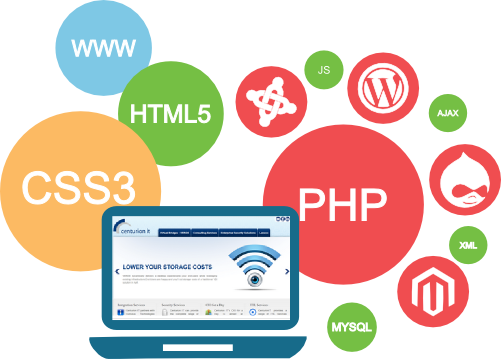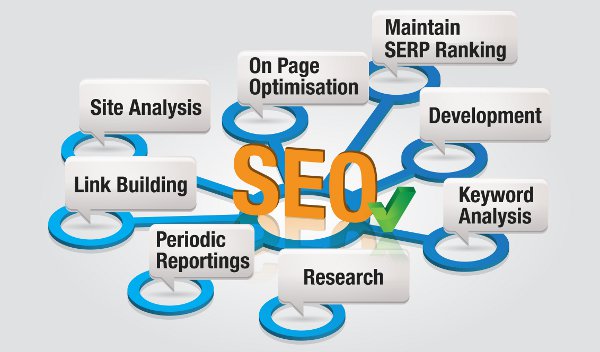Asp.net Application
Asp.net is an open source[2] server-side Web application framework designed for Web development to produce dynamic Web pages.
It was developed by Microsoft to allow programmers to build dynamic web sites, web applications and web services.
ASP.NET is in the process of being re-implemented as a modern and modular web framework, together with other frameworks
like Entity Framework. The new framework will make use of the new open-source .NET Compiler Platform (code-name "Roslyn")
and be cross platform. ASP.NET MVC, ASP.NET Web API, and ASP.NET Web Pages (a platform using only Razor pages) will merge into a unified MVC 6.
The project is called "ASP.NET vNext".
Web Development PHP, MySql
Introduction
- What is .NET Framework
- Understanding .NET Assemblies
- Microsoft Intermediate Language (CIL)
- NET Namespaces
- NET Framework Class Library
Working with Visual Studio.NET
- Installation and confuguration
- Profile setting & Creating a Project
- Using the Code Editor
- Setting Project Properties
- Installing SQL Server
- Adding References
- Compile a Program
- Run a Program
Workig With C#
- Using C# in your program.
- Define Namespaces
- Data Types in C#
- Variables and Constants
- Value Types versus Reference Types
- Operators and Expressions
- Understanding Type Conversions
- Using Console I/O
- Formatting Numbers, Date and Times
Loop and condition
- Writing program with If/Else
- Switch Case
- while and do/while, for loop and for each
Working with functions
- What is Static and Instance Functions
- Parameters by value and by reference
- Function Overloading
- Optional Parameters
- Using Variable Length Parameter Lists
- Arrays
- What is System Array
- Working with ArrayLists and Hashtables
- .NET Collections
- Working with Lists and Dictionaries
Object-Oriented Programming
- Understanding OOPs
- What is class and objects
- Understanding Inheritance
- Defining and Using Classes in ASP.NET
- Understanding the Role of Interfaces in .NET
Introducing ASP.NET
- Overview of ASP.NET 4.0
- Client-Side vs. Server-Side Execution
- Using Web Forms
- ASP.NET Application Folders
- Understanding Web.config
ASP.NET web Pages
- Creating ASP.NET Pages
- Understanding Code-Behind Model
- Understanding the Life-cycle of a Web Form
- Page Events Handling
Using Controls
- HTML Controls
- Web Controls
- Controls at Runtime
- Defining and Using Custom User Controls
Handling Events
- What is Event Driven Programming Model
- Understanding Event Handlers
- What is PostBack & Non-PostBack Events
- Using Proxies
- Sharing Event Handlers between Events
- Using Global.asax
Validation
- What is ASP.NET Validation Controls
- Client-Side Validation
- Server-Side Validation
- Regular Expression Validator
- Customizing Validation
- Working with Validation Groups
Creating and using Master Pages
- Master Page Architecture
- Designing a Master Page
- Designing Content Pages
Maintaining State
- Maintaining State within ASP.NET Applications
- Using the Application Object
- Using the Session Object
- Using the ViewState Object
- Reading and Writing Cookies
- Using the Query String
ADO.NET
- Understanding the ADO.NET Object Model
- Connected vs. Disconnected Access
- Using a Connection to Connect to a Data Source
- Execute Queries and Stored Procedures
- DataReader to Work with Cursors
- DataSet with Disconnected Data
- Using DataAdapters with DataSets
Using XML
- Understanding XML and XML Schemas
- Reading XML Data with a DataSet
- Writing XML Data with a DataSet
Data Binding
- Examining ASP.NET Data Bound Controls
- Connected vs. Disconnected Access
- Using the ListBox Control
- Using the GridView Control
- Using the DetailsView Control
- Using the FormView Control
ASP.NET Applications Security
- Understanding the ASP.NET 4.0 Security Models
- Authenticating Users
- Authorization User Requests
- Using the ASP.NET Login Controls
- Using the ASP.NET Web Site Administration Tool
Introduction to Web Services
- Overview of Web Services
- Creating a Web Service
- Using WSDL and Proxy Classes
- Consuming a Web Service
Deploying ASP.NET Applications
- Overview of ASP.NET Deployment Options
- Using Copy Web Site Tool
- Using Publish Web Site Tool
- Using Web Setup Projects
Conceptual Overview about Ajax Technology
- Using Asp.net Ajax Control Toolkits
- Using Server Side Asp.Net Ajax
- Using Client Side Asp.Net Ajax
- Client-Side JavaScript programming
- Microsoft Client Library for Ajax
- Remote method calls with ASP.NET Ajax
LINQ AND C#
- Generics, Delegates, Anonymous Methods, Enumerartors&Yeild
- Local Type Interface, Lamda Expressions
- Extension Methods, Object Initialization Expressions
- Anonymous Types, Query Expressions
- LINQ Queries
- Query Operators
- Operators
- LINQ to SQL, DataSet, Entities
- LINQ to XML API
- LINQ to XML Queries
WCF (Windows Communication Foundation)
- Architecture of WCF
- Project Template of WCF
- WCF Composition
- Building a WCF Service
- LINQ Queries
- Hosting a WCF Service


